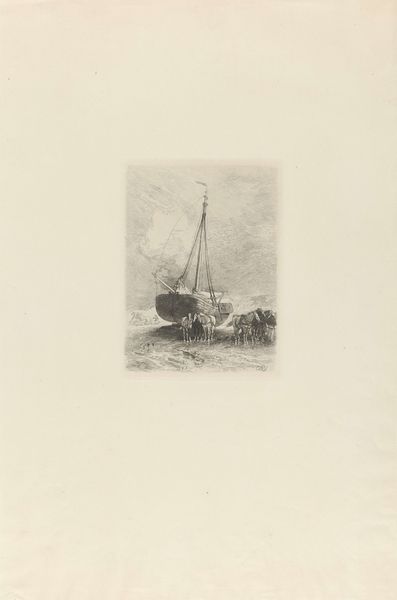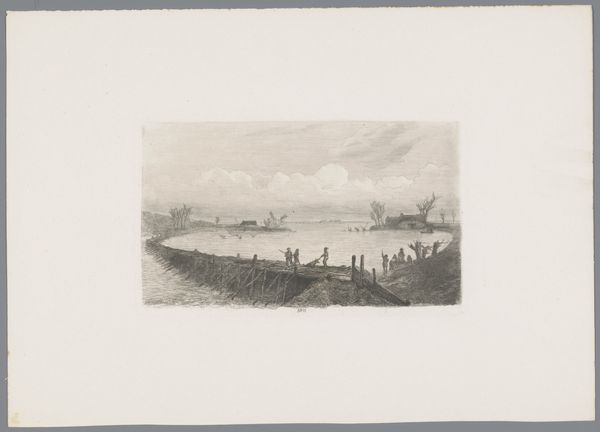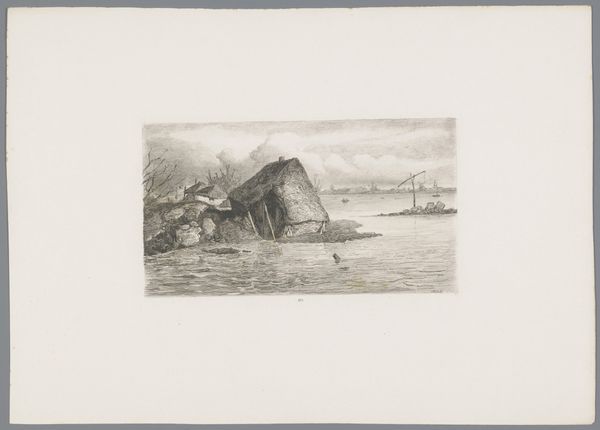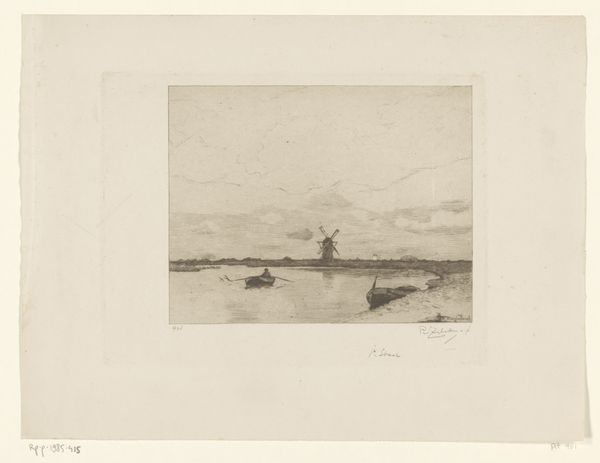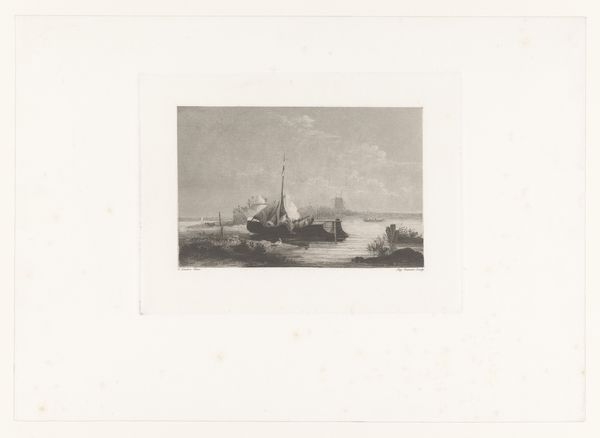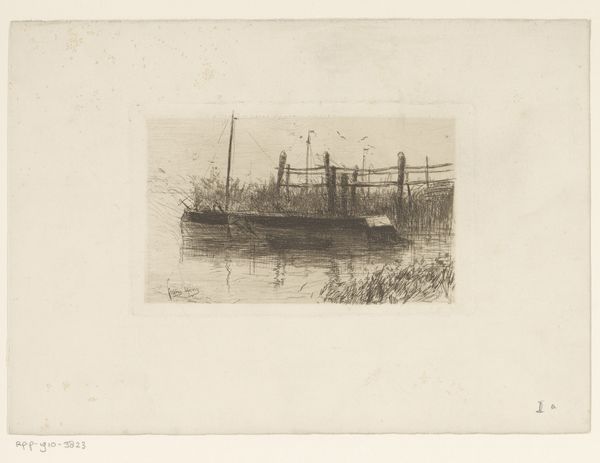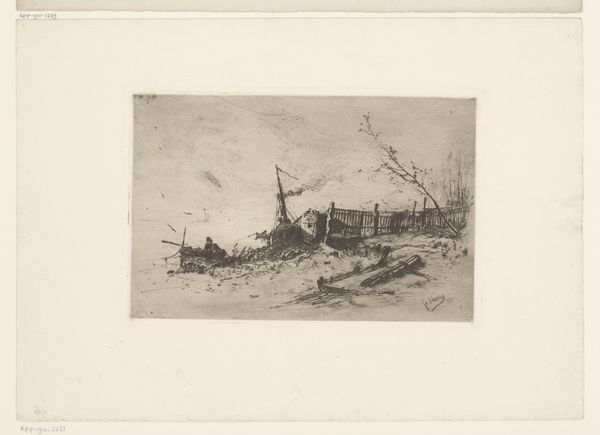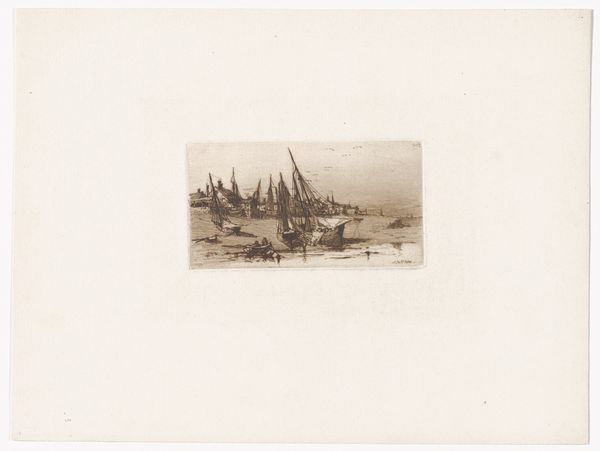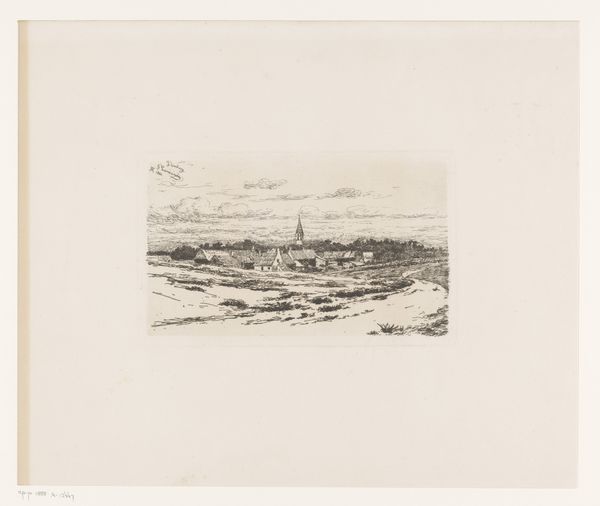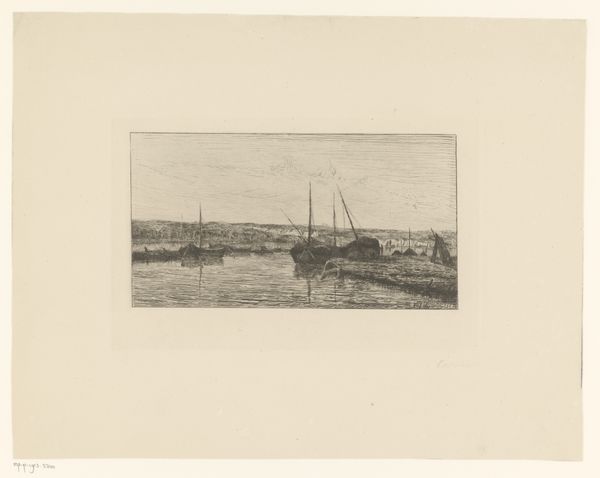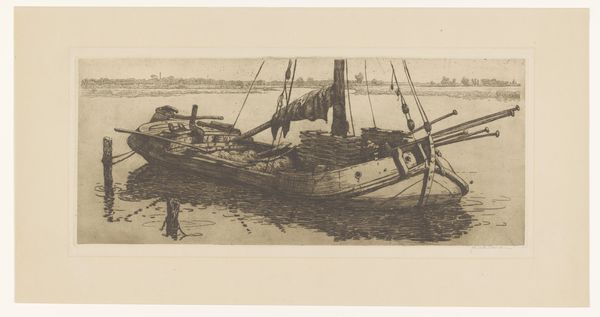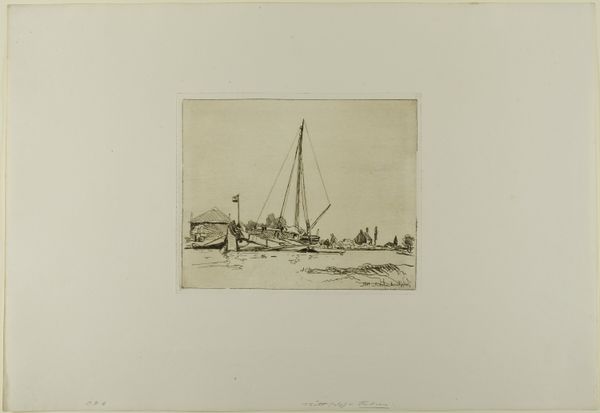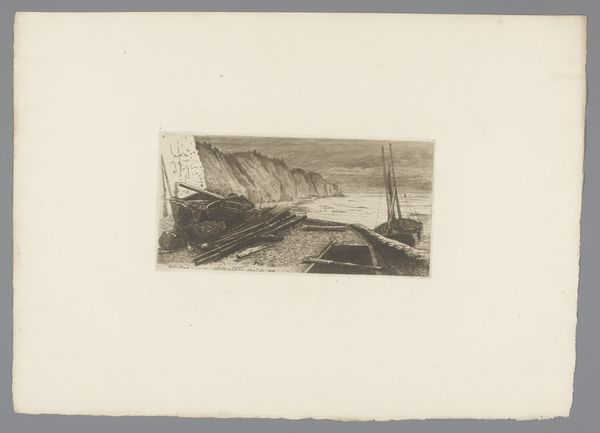
#
photo of handprinted image
#
light pencil work
#
ink paper printed
#
incomplete sketchy
#
hand drawn type
#
personal sketchbook
#
sketchbook drawing
#
watercolour illustration
#
sketchbook art
#
watercolor
Dimensions: height 300 mm, width 422 mm
Copyright: Rijks Museum: Open Domain
Curator: Welcome. We’re standing before Cornelis Springer’s “Doorbraak van de Arnhemmer Broekdijk, 1855,” currently held in the Rijksmuseum’s collection. Editor: The first thing that strikes me is its understated nature; the monochromatic palette, the fragile linework – it feels almost ephemeral. There's a subdued melancholy. Curator: Springer created this around the time when the Netherlands experienced severe flooding. Its somber tone likely reflects the real crisis and devastation that struck the region, disrupting agriculture and daily life. These events informed much of the visual culture of the era. Editor: Precisely! And the medium itself, ink and watercolor on paper, speaks to accessibility and reportage. This wasn't some grand oil painting commissioned by the elite. It seems to be more immediate, born out of necessity to capture the devastation rapidly. Notice how the human figures appear small, dwarfed by the landscape, underscoring human vulnerability against these forces of nature. Curator: Good point. We can see here how the breakdown of infrastructure created a demand for visual representations, distributed to garner relief efforts. It depicts more than a mere disaster; it also signifies the role of imagery in an increasingly networked world, as prints became easily disseminated and sold to broader audiences, both locally and internationally. Editor: And in terms of material resilience, consider paper's own history! Produced using wood pulp and water, paper, itself vulnerable to flood damage, serves to immortalize the impact. It reveals so much about our dependence on materials and how they also reflect the context in which they are used. Curator: A poignant detail that deepens our understanding. These were not merely aesthetic exercises, but pivotal visual documents informing public awareness. Thank you, that’s an invaluable material-focused perspective. Editor: Thanks to you! Looking closely, it makes you think differently about both the art and our connection to the past.
Comments
No comments
Be the first to comment and join the conversation on the ultimate creative platform.
